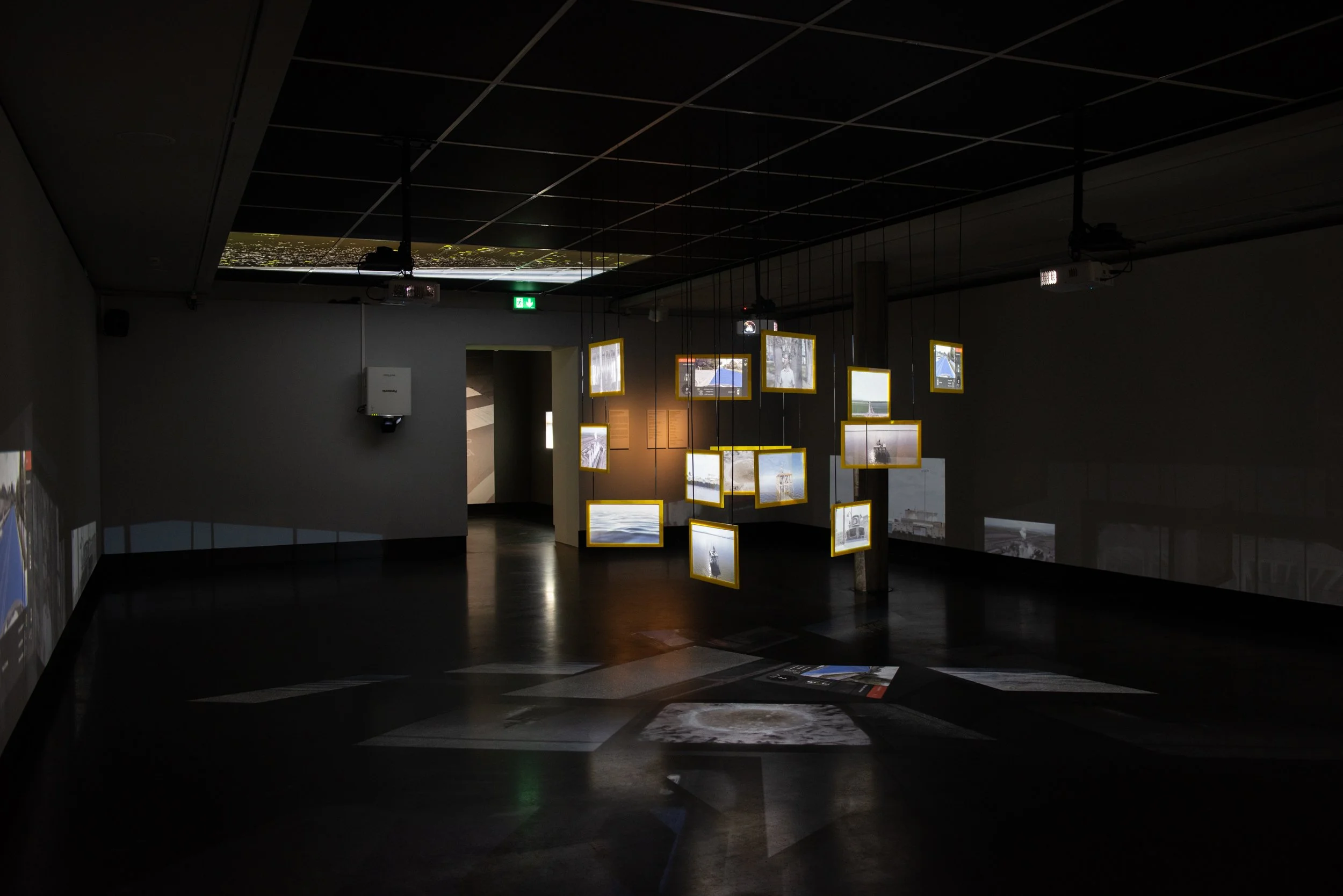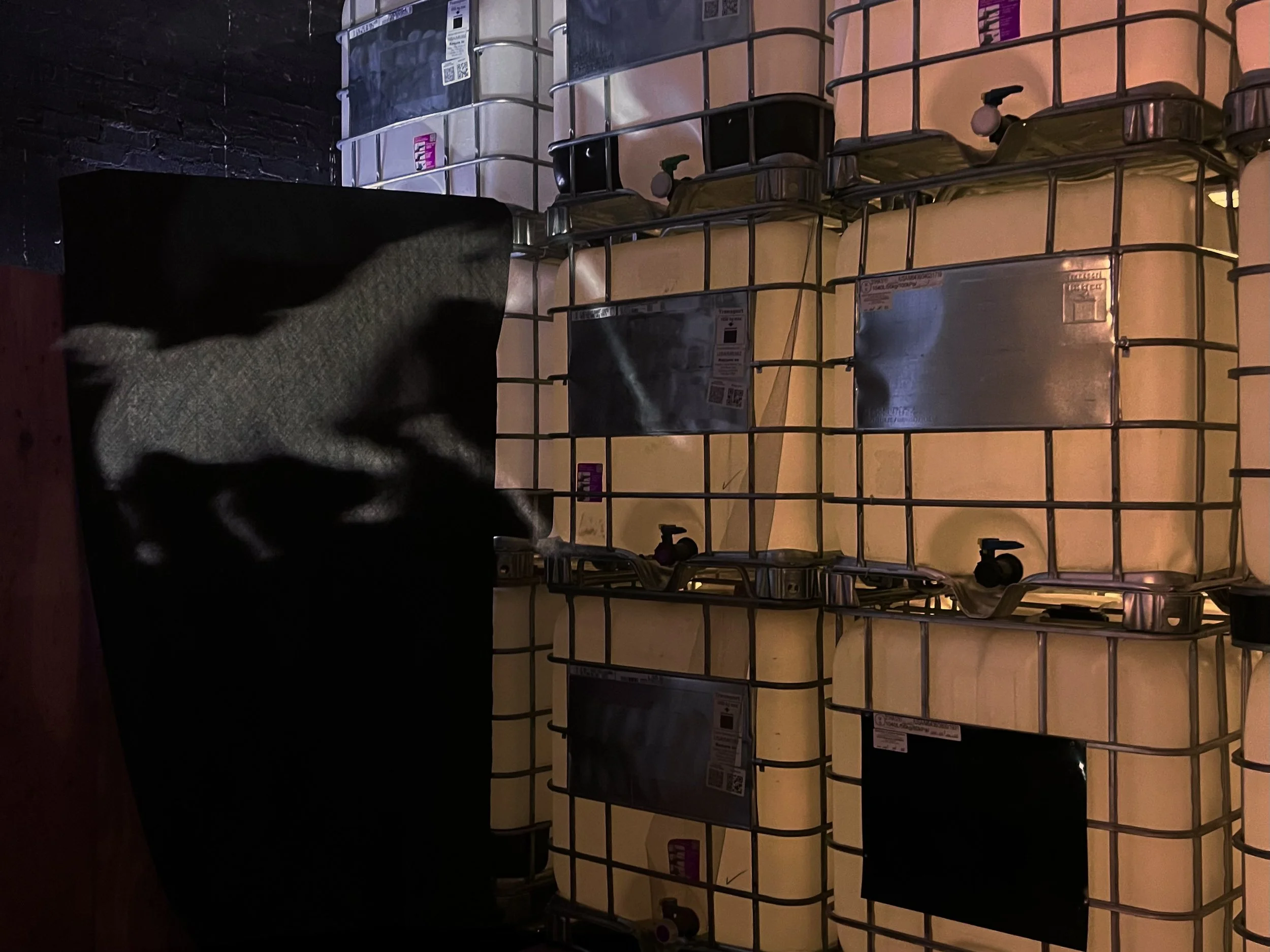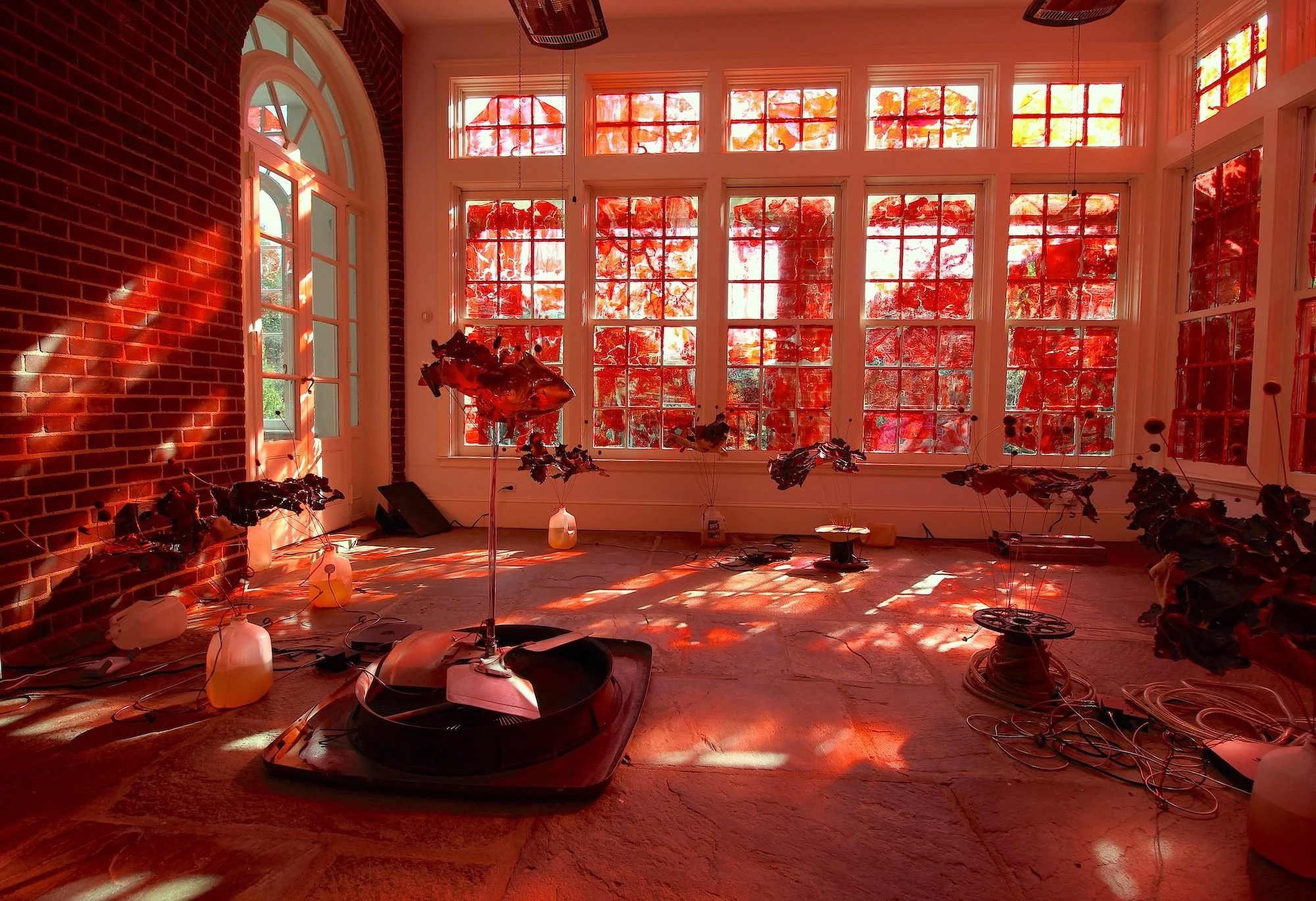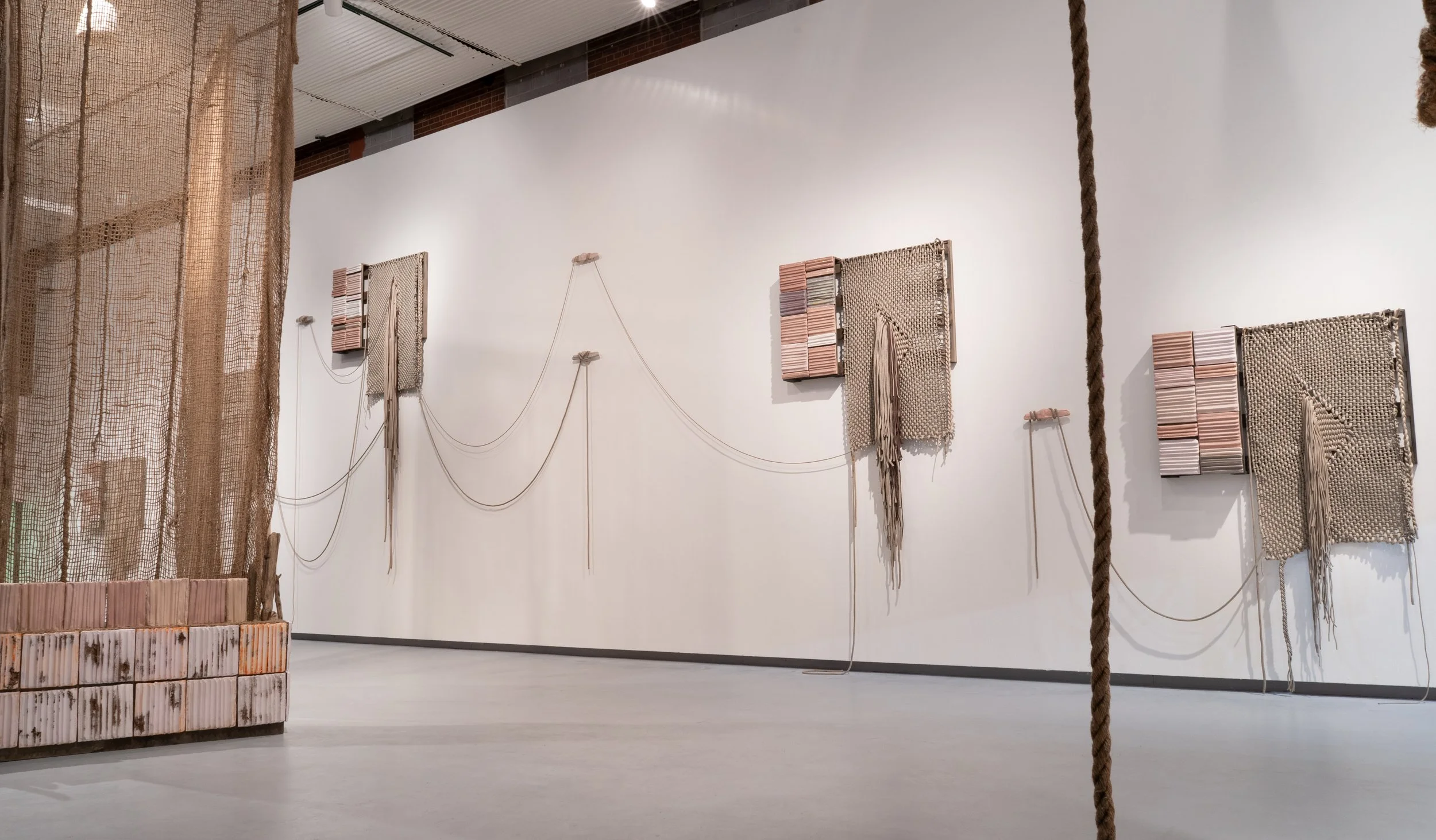Editors’ Selects: October 2025
Lisa Barnard: You Only Live Once; Isadora Romero: Notes on How to Build a Forest
C/O Berlin | Hardenbergstr. 22-24, Berlin
Sep 27, 2025 – Jan 28, 2026
Lisa Barnard has managed quite a funny trick in her otherwise pessimistic new show, You Only Look Once at C/O Berlin. She’s installed a soundscape featuring a deafening train horn and the low rumble of a locomotive passing over tracks in a space with an enormous window overlooking nearby Bahnhof Zoo. It takes a couple of loops to realize that it’s a recording, and not the sound of one such train passing by the space itself.
Such a deceptive boundary between inside and outside is an apt-enough metaphor for the gallery’s annual After Nature Prize, inaugurated last year to spotlight artists using photography to view nature as “indivisibly interwoven in the social and political expressions of our way of life.” Both Barnard and her co-recipient Isadora Romero chose specific (if wildly disparate) locations through which they access the Anthropocene’s ecological discontents. Barnard hones in on California’s manmade and highly toxic Salton Sea; Romero’s How to Build a Forest is rooted in two Ecuadorian cloud forests and the indigenous Yunguilla community living among the trees.
It’s through the Yunguilla community that Romero constructs a photographic argument for cloud forests not as ecosystems too precious to touch but as sociocultural spaces in which intervention need not be exploitative. Such a forest is not just acted upon but itself an actor, visible in mold-eaten slide reproductions pulled from the community archive. Still, Romero does not shy from globalization’s inevitable creep. In a generous portrait series where Romero repurposes mosquito nets to glamorous effect, one local woman dons a Dodgers jersey. Destruction remains a real possibility, with unfixed lumen prints of endangered plants fading each time a visitor opens the cabinet where they’re stored.
Barnard is even more direct. She digs into the Salton Sea’s history, first as a test site for pilots training to drop the atomic bomb on Japan, then as a modern hotbed of “technological solutionism” thanks to its newly minted lithium extraction industry. A long-gone and since-taxidermied pelican sits opposite an image of crystallized agricultural runoff pink enough to be mistaken for rock candy. She points AI analysis software at the local bat population, then considers the ways the animal’s echolocating abilities are translated into the uncanny world of self-driving cars. Nature’s ability to sense itself becomes technology’s ability to sense everything, then act autonomously. If Romero's images make a hopeful case for collaboration between humans and nature, then Barnard’s point to the frightening incursion of a third party—one all the more alien for having co-opted the abilities of both.
— Elle Carroll
Sky High Farm Biennial 2025: Trees Never End and Houses Never End
11 Main Street, Germantown, NY
June 28 – October 25, 2025
It’s been a long time since I left an art happening of any kind truly at a loss for words (if anything, my gut instinct is to accost art of all sorts with too many words). And yet only one word came to mind as I reemerged from a former apple cold storage warehouse into the clear October sunshine pooling unevenly along the Hudson: uncanny.
In a funny way, the post-industrial locale of Sky High Farm’s inaugural biennial, Trees Never End and Houses Never End, makes perfect sense as the site of artist and ex-indie sleaze poster child Dan Colen’s curatorial debut (if you’re unfamiliar, his substance-fueled, trashed-hotel-room “hamster nest” collaborations with Dash Snow are a good place to start). Taking over two floors of the spacious facility located two hours north of New York City in Germantown, the show comprises a site-specific exploration of the relationship between the ecology, history, and industry of the Hudson Valley and New York City.
Sky High Farm itself is situated on a 560-acre property about 15 miles east of Germantown. Founded by Colen in 2011 and incorporated into a nonprofit in 2016, the organization seeks to address and respond to urgencies in the food system, cultivating nutrient-dense food which is then distributed to individuals and families experiencing food insecurity. Trees Never End and Houses Never End, featuring more than 160 works by 50 artists, including Anne Imhof, Roni Horn, Nan Goldin, Tschabalala Self, and Ryan McGinley, is the farm’s first serious foray into the art world.
The two-level show exudes a clubbiness that Colen seems unable (or unwilling) to shake. Imhof takes this undercurrent and runs with it: on the lower floor, she has constructed a labyrinth of industrial water tanks, which are slated for reuse as composting bioreactors after the exhibition. Situated within the rows of milky white blocks caged in thick metal wire are an excess of images, projections, objects, and organic materials in various unsettling configurations. As I round a corner, a horse apparition careens toward me; stones resting on a cluster of wooden plinths take on the menacing quality of severed heads; traversing a long corridor through a jumble of muffled voices toward an ominous red glow dredges up the slow terror elicited by filmmaker Dario Argento’s German Expressionist aesthetics. A weight lifts from my chest as I emerge from the fantastically pink metal stairway onto the top floor, where light streams in through paned glass and ricochets off Rudolf Stingel’s mirrored floor.
The experience fulfilled a craving for escapism that I hadn’t realized was there. Perhaps that’s not what Colen and collaborators set out to satisfy, but the afterimage of the show is all the more vivid for it. Dystopically decadent and disconcertingly chic, the gargantuan group show does not romanticize the mythic “art community” (a phrase Colen rejects) or its ability to spark change, but hints at its messy persistence in unlikely places.
— Emma Fiona Jones
Ehinomen Okoeki: The Line Between Us
Yenwa Gallery | 1-7 Muri Okunola Street, Victoria Island, Lagos
September 13 – October 4, 2025
Nigerian art galleries tend to function as high-end bazaars where select clientele shop for pricey paintings and objets d’art to accessorise their homes and offices. At first glance, Yenwa Gallery, situated in Victoria Island, a high-brow Lagos neighbourhood, fits the profile. However, under the direction of founder, Ugonna Ibe, their playbook is less commercial showcase, more art salon, where social and political discourse is just as important as aesthetic value.
The commentary running through The Line Between Us, the debut solo exhibition by mixed media and collage artist Ehinomen Okoeki, is focused on migration. Faced with increasing economic pressures and security challenges, relocation outside Africa has become fashionable to many Nigerians, even earning the nickname, japa, a Yoruba word which means “to flee.”
Rather than interrogate the reasons behind migration, Okoeki centres the emotional highs and lows that come with the experience. The collage series Portraits of Absence (2025), which show different family-style portraits with one or several heads missing, speak to how relocation changes family dynamics, while the six-painting The Border Line series (2025) feature heartwrenching goodbye scenes at boarding gates, a sentiment Yenwa Gallery plays up by decorating their space like an airport terminal, complete with arrival and departure announcements. Eyes are the window of the soul, and the subjects of these collages all share exaggerated eyes that manifest and magnify their joys and tears, whether they are excited travelers at tourist sites (Tourist of Myself, 1–4 (2025)) or elderly people separated from their loved ones (Echoes Across The Distance, 1–4 (2025)).
Okoeki’s entry into the art world was through working as a studio assistant for his uncle, the Nigerian-American artist Victor Ehikhamenor; however, it was from experimenting with Photoshop in his free time and working in advertising that his own artistic style, characterized by a playful approach to proportions, the use of greyscale, and mimicking ankara fabric with geometric patterns, developed.
Okoeki likes to work in series, exploring one idea in different variants before moving to the next. A creative approach that works best in small doses, it gets stale with overuse: cue the ten-piece series, The Seat by the Window (2025), which starts contemplative but becomes grating after the third or fourth iteration. And yet, what I find repetitive as a viewer makes complete sense from a sales perspective. After all, the more the merrier for interested collectors. An important conversation is being cultivated, but the instinct for profit-making remains.
— Akumbu Uche
Toolish Behavior
NYU Tisch Clive Davis Gallery | 30 Jay Street, Brooklyn
September 8 – October 24, 2025
Our daily lives are increasingly shaped, contained, and restricted by technologies that promise efficiency; industrial tools, commercial software, and now AI chatbots all claim to optimize how we live. Yet when artists work from personal expression, off-the-shelf tools rarely fit. Before making art, many must first fabricate their own bespoke instruments. While these inventions are real creative weapons of the artists, they are left outside of the exhibition space. Curator Shuang Cai brings these hidden tools into view in Toolish Behavior, now at the Clive Davis Gallery in NYU’s Tisch Building. The show presents twelve interdisciplinary artists with custom-made tools displayed alongside their works.
As the show’s manifesto puts it, “Toolish Behavior resists standardization, the factory mold and the clean download.” Cai has long been fascinated by forms of labor that are usually considered too self-evident to warrant attention. Here, she insists that “certain toolish instinct, a productive friction, and a tendency to build around processes” is central to artistic work.
The exhibition presents artists who write their own code, hijack existing platforms, or build physical instruments. Lily Crandall reimagined Google Sheets as a grid for designing crochet patterns. Shelby Wilson created a web app to streamline tedious bead-weaving calculations, turning a laborious task into something meditative. Lu Lyu designed a custom Grasshopper plugin to generate a pair of irregular gears that mesh perfectly. In one of the sample works on display, the gears take the shapes of her parents’ interlocking bodies, a metaphor for mutual dependence. The plugin remains open to anyone who wants to commission gears in new forms. In a more romantically technophile gesture, Yufeng Zhao wanted to create an infinite coastline. To do that, he developed a Horizon Labeling Tool (2025) to drag and mark coastlines across thousands of images found online.
Among the works, one that resonates with particular poignancy is by Andrew Samuel Harrison, who presented an ironworker glove with only two fingers, adapted to his prosthesis after neonatal surgeries. The glove was shown with a furniture-like sculpture that deliberately subverts functionality. Together, the works expand the very notion of what a tool is and raise urgent questions about modern society’s fixation on standardization and the limits of functional design.
“The show does not aim to simplify the creative process but to reveal how messy, iterative, inventive, and therefore reproducible it really is,” the curatorial statement says. By placing tools at the center, Toolish Behavior shows that creativity is never about the finished idea but starts with rejecting what is already given.
— Peiyue Wu
Magdalena Dukiewicz: Bloom
Wave Hill | 4900 Independence Ave, Bronx, NY
September 20 – November 2, 2025
Walking through the gates of Wave Hill in Riverdale, a grand and green twenty-eight-acre landscape unfurls—lush with towering trees, beds of perennials abuzz with honeybees, and birds soaring over the silvery Hudson River—a reprieve for urban retinas and a splendid composition of nature in full blossom. But within steps, the Edenic turns menacing. Inside the Glyndor Gallery, Magdalena Dukiewicz’s eerily ominous installation transforms the Sunporch into a crimson, post-apocalyptic warning titled Bloom.
Although Bloom might sound like a misnomer, it signifies a subversive reading—a “metaphor for the vitality of growth and the spread of bacteria and industrial contamination.” What flourishes here is not renewal but residue: rusted and reclaimed mechanical junk scattered across the space, and flora overtaken by leathery fungi and hairball clusters that resemble mutated craspedias. They sprout from copper coils, cable spools, and Poland Spring jugs filled with sienna-tinted rainwater, their roots replaced by plastic tubes and electrical wires. Smeared with a concoction of collagen, glycerin, and organic dyes, the windowed walls and skylights cast a bloody glow.
The site-specific installation is designed to make the viewer uncomfortable—not only visually but sensorially. Ceiling heaters radiate, with the heat thickening the air as the blood-red batter on the glass shrinks, cracks, and peels before dripping onto the floor. The room rumbles with a sinister soundscape composed of the artist’s own breathing, layered with data sonifications derived from live fluctuations in air quality in the South Bronx (drawn from open-source city monitors) and movements in the Sunporch captured by conduction speakers.
Beneath this orchestration of decay lies a pointed critique of wealth inequality and racial and socio-environmental injustice. Though the South Bronx and Riverdale share a borough, they expose a grim inequality. Riverdale remains predominantly white, while the South Bronx is largely Black and Hispanic, with pollution mapping precisely onto socio-economic lines. In the South Bronx, asthma hospitalizations occur 15 times more often than in Riverdale, 21 times more than in other New York neighborhoods, and five times the national average, making it one of the most polluted pockets in the country.
The sculptural soundscape is Dukiewicz’s opus magnum—a synthesis of the media and ideas she has explored for over a decade. Materials are meticulously chosen: the wood-ear mushrooms, used for detoxifying and nourishing the lungs in Chinese medicine; the artist’s own hair, its keratin slow to decompose—an allegory of the human, something left behind. Together, all the elements transform the language of blooming into one of dystopian, cautionary corrosion.
Magdalena Dukiewicz: Bloom is curated by Rachel Gugelberger.
— Ilsy Jeon
Yasmin Spiro: Cornerstone
Hyde Park Art Center | 5020 S. Cornell Avenue, Chicago
April 19 – November 2, 2025
Slowly-dirtying wraps try but fail to protect the scaffolds of an in-progress building. The workers are late; the schedule is behind; the deadline, missed. They appear like failed memorializations of architecture: conflict tarnishes, preservation stales.
Yasmin Spiro’s solo exhibition, Cornerstone at Hyde Park Art Center, however, isn’t in mourning; she’s cleaning up after the demolition. The exhibition lives in the context of her Jamaican history and the context of the country’s conflict. The works are desiring and languorously longing for each other, self-protective secrets unveiled in laborious material expression. In these appendaged tapestries, Spiro’s gestures of conservation are, actually, ephemeral monuments.
Landlines (Sound System Cross the Valley) (2025) is a devious contraption of burlap, twine, rope, and ceramics: it’s silent grit. Ceramic bells string to the ceiling, silent as well, until the artist—or a confident visitor—rings them. Shelter I: Under the Skin of the Frame (2025) is in concert with other works cartographically traversing the space. They drape and droop, evolve and devolve. The gallery’s artificial light scatters shadowed limbs. Salt Gut Sheet Bends (2025) is defunct and flaccid. The ropes aren’t reaching or desiring, the bells don’t seem to desire a shaking pronouncement; they wait for activation.
Cornerstone (Home is a Sound We Carry) (2025) has porcelain slabs as parapets, a grounding to the ethereal form reaching to the ceiling. The pavers appear fragile, yet the artist performed a destabilizing gesture—lifting one, she demonstrated their weight. This cemented the nature of the work: trickily effervescent and misty, yet steadfast—a simulacra of fragility. The hovel continues its nurturing, acting as a womb for the sound recording resonating above. Hymns, grunting waves, and other unidentifiable sounds caress.
With preceding knowledge of Spiro’s influence from semi-provisional structures such as the Coronation Market in Kingston, one could simplify with a dirtying facade lost in nostalgic memory. A gravestone no one removed the must and rust from. But Spiro’s materials remain pristine. Their clean nature reinforces an after-the-fact method of in-process preservation: a perpetually-becoming nature. It’s a bartering blueprint, becoming wistful rather than melancholy.
While on a monumental scale, the work still feels a little shy. But shyness is not equal to defenselessness here; it’s self-protective. Reach, pull, and grip Spiro’s material and autobiography. There’s no rope burn—it’ll slide just fine.
— Samuel Schwindt






